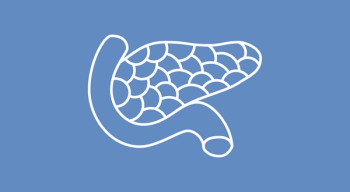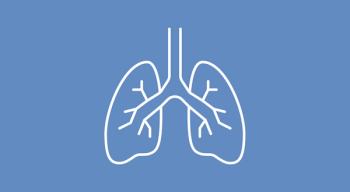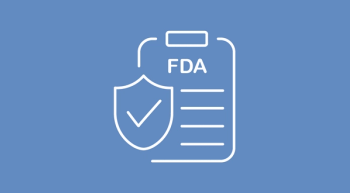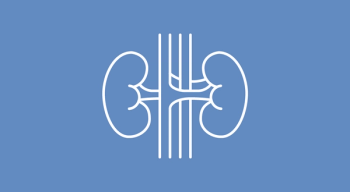
Patients with BRCA-, ATM- and CDK12-mutated mCRPC treated with frontline olaparib plus abiraterone acetate experienced delays in disease progression and improved outcomes.

Patients with BRCA-, ATM- and CDK12-mutated mCRPC treated with frontline olaparib plus abiraterone acetate experienced delays in disease progression and improved outcomes.

The FDA granted efineptakin alfa an orphan drug designation, deeming it a potential treatment option for pancreatic cancer.

Subsequent therapies in patients with metastatic hormone-sensitive prostate cancer who were censored from primary overall survival follow-up from the ARASENS trial, according to a post hoc sensitivity analysis, confirmed the overall survival benefit derived from darolutamide plus androgen deprivation therapy and docetaxel.

An sNDA seeking approval for alectinib received priority review from the FDA, which, if approved, will be indicated to treat patients with early-stage ALK-positive NSCLC after surgery.

Favorable ECOG performance status and less advanced disease may predict which patients with metastatic colorectal cancer might have long-term remission when treated with regorafenib.

An expert discussed how approaching the stigma around lung cancer in an empathetic way may be the tool to help eliminate disparities around screening for the disease.

Nurses can help promote a feeling of dignity in older patients with cancer by monitoring psychological distress.

A priority review has been granted by the FDA to trastuzumab deruxtecan for the treatment of unresectable or metastatic HER2-positive advanced solid tumors.

Social support in patients with cervical cancer has the ability to provide patients with answers to some unknowns, and nurses can play a role in helping patients find this type of support.

After radical prostatectomy, patients with prostate cancer treated with abiraterone acetate plus prednisone and apalutamide had improved outcomes without a significant impact on their health-related quality of life.

Consuming navy beans daily as a dietary intervention may contribute to the health of the body's microbiome.

First-line treatment with nivolumab plus ipilimumab for patients with microsatellite instability–high or mismatch repair deficient metastatic colorectal cancer can be considered a standard-of-care option based on results from the phase 3 CheckMate-8HW trial.

Researchers determined that the phase 3 EVOKE-01 trial failed to meet its primary end point of significantly improved OS with sacituzumab govitecan in patients with pretreated non-small cell lung cancer compared with docetaxel.

Treatment with belzutifan for advanced/metastatic clear cell renal cell carcinoma delayed worsening symptoms and improved quality of life.

Researchers did not observe any grade 3 or 4 adverse events with darolutamide with androgen deprivation therapy for 6 months followed by radical prostatectomy in patients with locally advanced prostate cancer.

All patients enrolled in the EV-302 trial with previously untreated, locally advanced, or metastatic urothelial carcinoma obtained a survival benefit with enfortumab vedotin-ejfv plus pembrolizumab.

Cabozantinib plus atezolizumab may be a new treatment option for patients with metastatic castration-resistant prostate cancer whose disease progressed on novel hormonal therapy.

Patients with cisplatin-ineligible urothelial carcinoma treated with frontline pembrolizumab plus cabozantinib obtained responses with a manageable toxicity profile.

Patients with high-risk prostate cancer treated with a higher dose of radiation therapy and long-term androgen deprivation therapy improved progression-free, cancer-specific, and overall survival compared with the standard dose of radiation.

Frontline olaparib plus abiraterone/prednisone improved progression-free survival and responses in patients with metastatic castration-resistant prostate cancer compared with each of the components of the therapy alone.

Patients with metastatic castration-resistant prostate cancer who were previously treated with external beam radiation therapy before radium-223 did not experience an increase in hematological toxicity compared with the overall population.

Despite germline and somatic testing being the standard of care for patients with metastatic castration-resistant prostate cancer, rates of its real-world use shows that it may be underutilized, which may negatively impact therapeutic offerings.

Darolutamide plus androgen deprivation therapy and docetaxel in patients with metastatic hormone-sensitive prostate cancer may lower hospitalization rates but marginally longer lengths of stay vs treatment with placebo, androgen deprivation therapy, and docetaxel.

An expert discussed how oncology nurses can help social workers seek available financial resources for patients by opening the conversation about any needs to be addressed.

Fruquintinib showed potential in providing an improved quality of life and survival benefit in patients with previously treated metastatic colorectal cancer.

Disitamab vedotin either alone or with TKIs, ICIs, or other antiangiogenic agents were consistently effective in patients with HER2-positive or -low breast cancers.

Detecting minimal residual disease with ctDNA in patients with stage II/III colorectal cancer may strongly predict disease recurrence and the potential benefit from adjuvant chemotherapy.

Patients with non-muscle invasive bladder cancer treated with the novel photodynamic therapy TLD-1433 experienced 6-, 12-, and 15-month complete response rates of 54%, 38%, and 37%, respectively.

With pembrolizumab plus chemoradiotherapy now approved by the FDA for patients with advanced cervical cancer, one expert explained the importance of “making sure that patients know what to look for and what to report.”

Treatment with durvalumab, bevacizumab, and TACE improved PFS in embolization-eligible patients with unresectable hepatocellular carcinoma.